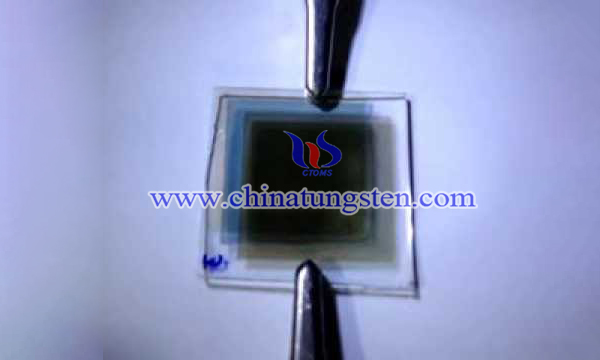Preparation Process of Sprayed WO3 Thin Films
- Details
- Category: Tungsten Information
- Published on Monday, 17 January 2022 14:35
Electrochromism (EC) is a phenomenon that induces a reversible optical change (coloration/bleaching) in a material by applying a small electric field. Tungsten oxide (WO3) is the most widely studied electrochromic material due to its outstanding electrochromic (EC) properties. Materials that can continuously and reversibly change color under reversible electrochemical processes are called electrochromic materials, which have been widely used to fabricate light modulation devices. Among these devices, anti-glare car mirrors have been commercialized, and smart windows are currently driving intensive development.
Scientists have concentrated on improving the preparation process of tungsten trioxide. Cost-effective and simple spray-pyrolysis technique can be applied to fabricate sprayed WO3 thin films for photochromic applications. The preparation process of sprayed WO3 thin films is as below:

WO3 films were obtained by deposition using freshly prepared 0.01 M solutions (different VL: 50, 100, 150 ml) at a spray rate of 4 ml/min. The deposited films were observed to be transparent, well adhered to the substrate, uniform and free of pinholes. The obtained 1 μm thick films of WO3 were deposited on a 20 mm × 10 mm × 1 mm Pyrex glass substrate. Use forced air as the carrier gas to enhance the chemisorption of oxygen. The operation is carried out in an insulated oven with two gas tanks for the collection of steam and gaseous ammonia. Subsequently, the films were exposed to air at 400-500 and 450 °C for 2 h using a programmed tubular oven, respectively.

In conclusion, sprayed WO3 thin films have been grown by the spray pyrolysis technique followed by an annealing process. The deposited films show a relatively high absorption coefficient, around 104 cm-1, and show a direct transition gap located in the 2.6-3.6 eV domain. These materials have been found to be n-type, and electrical measurements are being made to arrive at the resistivity of such thin films. Overall, the preparation of sprayed WO3 thin films for photochromic applications is a cost-effective and simple spray-pyrolysis technique.
- Tungsten Oxide Manufacturer & Supplier, Chinatungsten Online: www.tungsten-oxide.com
- Tungsten News & Prices of China Tungsten Industry Association: www.ctia.com.cn
- Molybdenum News & Price: news.molybdenum.com.cn
- Tel.: 86 592 5129696; Fax: 86 592 5129797; Email: sales@chinatungsten.com



 sales@chinatungsten.com
sales@chinatungsten.com